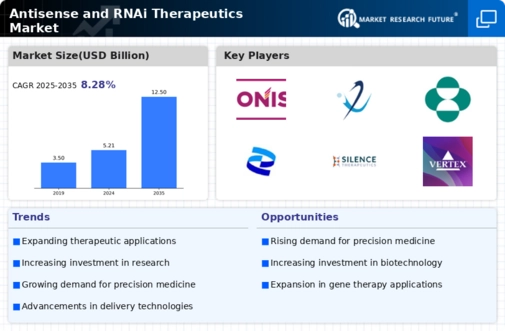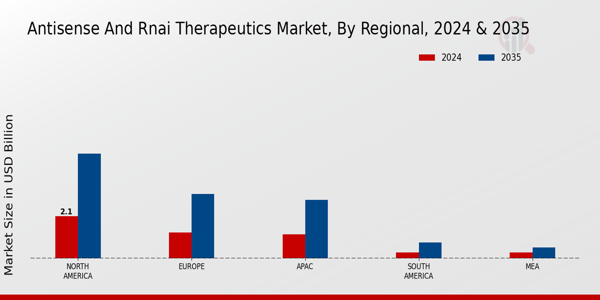The competitive insights of the Antisense and RNAi Therapeutics Market reveal a dynamic landscape marked by innovation and strategic collaborations. This market has gained traction due to the promising applications of these therapies in treating various genetic disorders and chronic diseases.
Key players are investing in research and development to enhance the efficacy of their products while navigating regulatory challenges to ensure compliance and accelerated approvals. The growing prevalence of genetic diseases, coupled with advancements in genomics, is propelling interest among stakeholders.
Additionally, strategic partnerships and collaborations between biotech companies and research institutions are fostering a conducive environment for innovation, allowing for the exploration of new therapeutic targets.
Ionis Pharmaceuticals holds a strong position in the Antisense and RNAi Therapeutics Market, leveraging its proprietary antisense technology platform to develop treatments for a range of diseases, including neurological disorders and cancer. The company boasts a robust pipeline of drug candidates that have demonstrated efficacy in clinical trials, establishing it as a leader in this sector.
Ionis Pharmaceuticals is recognized for its commitment to precision medicine, focusing on personalized approaches that cater to individual patient needs. Moreover, its strong intellectual property portfolio protects its innovative discoveries while enabling collaborations with larger pharmaceutical companies, giving it a competitive edge in securing market share.
The company's experience in navigating the regulatory landscape further strengthens its market presence, making it a formidable player in the field of antisense and RNAi therapeutics.
Alnylam Pharmaceuticals is another key contender in the Antisense and RNAi Therapeutics Market, renowned for its pioneering work in RNA interference technology. The company focuses on developing transformative therapies that address rare diseases caused by genetic mutations, positioning itself as a leader in this niche market segment.
Alnylam Pharmaceuticals has achieved significant milestones, including the successful commercialization of its products, which have shown promising clinical outcomes. The company's commitment to advancing its RNAi platform enables continuous research into innovative therapeutic solutions.
Through strategic alliances and collaborations with other industry players, Alnylam Pharmaceuticals enhances its footprint and expands its product offerings. The ability to rapidly bring novel therapies to market due to efficient development processes underscores its competitive advantage in the evolving landscape of antisense and RNAi therapeutics.






















